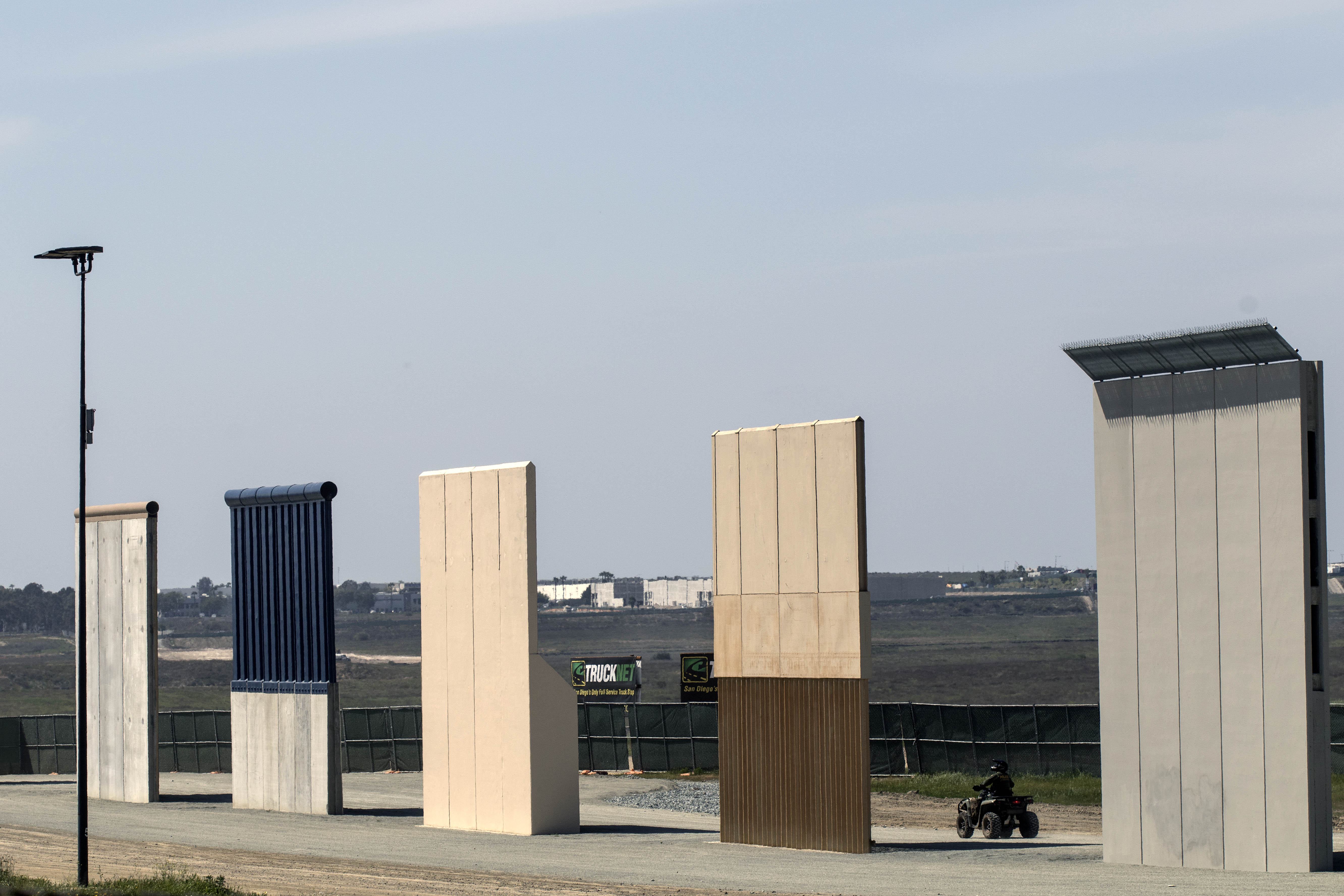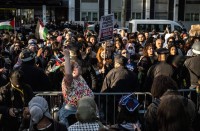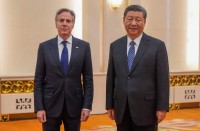
President Donald Trump on Tuesday vowed to deploy the military to secure America’s southern border, as a caravan of Central American migrants heads north through Mexico toward the United States. / AFP PHOTO / GUILLERMO ARIAS
by Thomas WATKINS
Agence France-Presse
WASHINGTON, United States – Pentagon planners scrambled Wednesday to find ways to support President Donald Trump’s surprise edict that he would send “the military” to guard America’s southern border.
The commander-in-chief’s seemingly off-the-cuff directive blindsided officials Tuesday, when Trump said the military would guard the frontier until “we can have a wall and proper security.”
It took hours for the White House to clarify that Trump’s plan involved mobilizing the National Guard, and not active-duty troops, but Defense Department officials kept looking for other ways to bolster border security.
“There are a number of ways the Department of Defense is already supporting the (Department of Homeland Security) border security mission,” Pentagon spokeswoman Dana White said late Tuesday.
“We are still in consultation with the White House about ways we can expand that support.”
Legally, the Pentagon is limited in how it can help with regular troops on the border, as an 1878 act restricts how the federal government can deploy forces domestically.
The National Guard is different: each state has its own militia that can be called into action by the governor.
Federal authorities can, however, activate guardsmen to go overseas, such as during the Iraq War.
Since 2006, National Guard troops have been deployed three times along the border, most recently in 2014, when Texas’s then governor Rick Perry sent his state’s militia to boost security amid an influx of young immigrants from Central America.
The National Guard did not immediately respond to a request for comment on future deployments to the border.
The National Guard has recently been called to action in the wake of multiple natural disasters, and the militias are well known internationally for their involvement during civil rights protests in the 1950s and ’60s, and their deployment to New Orleans after Hurricane Katrina.
– Boots on the ground –
Syracuse University professor William Banks, who has written a book about the domestic role of the American military, said the Pentagon might find it simplest to offer support other than regular troops, such as logistical or intelligence support to the civilian agencies on the border.
“It would be extraordinary to have so-called boots on the ground involved in enforcing (immigration) laws,” Banks told AFP.
“The president would need a legal authorization to carry out that mission. I doubt that he could get it.”
The anti-immigration president has previously suggested the military could help fund and build a wall along the Mexican border, but Tuesday’s remarks were the first time he proposed US troops to patrol the 2,000-mile (3,200-kilometer) frontier.
Throughout his campaign and the first year of his presidency Trump insisted the wall project would somehow be paid for by Mexico — an idea firmly rejected by the government there.
But Trump has had no success in trying to get $25 billion in funding for the wall from Congress, so he has turned to the Pentagon in the hope of poaching funds from its mammoth defense budget.
“Because of the $700 & $716 Billion Dollars gotten to rebuild our Military, many jobs are created and our Military is again rich,” he recently tweeted.
As has repeatedly been the case since Trump’s inauguration, Defense Department bureaucrats were caught flat-footed by the remarks.
Since coming into office, Trump has unexpectedly called for the banning of transgender troops, demanded a military parade and vowed to pull US forces out of Syria “soon,” all with little or no apparent coordination with the Pentagon, where bureaucrats have struggled to bend policy to confirm with the president’s wishes.
A US official told AFP the Pentagon had “no idea” what the ultimate border mission might look like.







